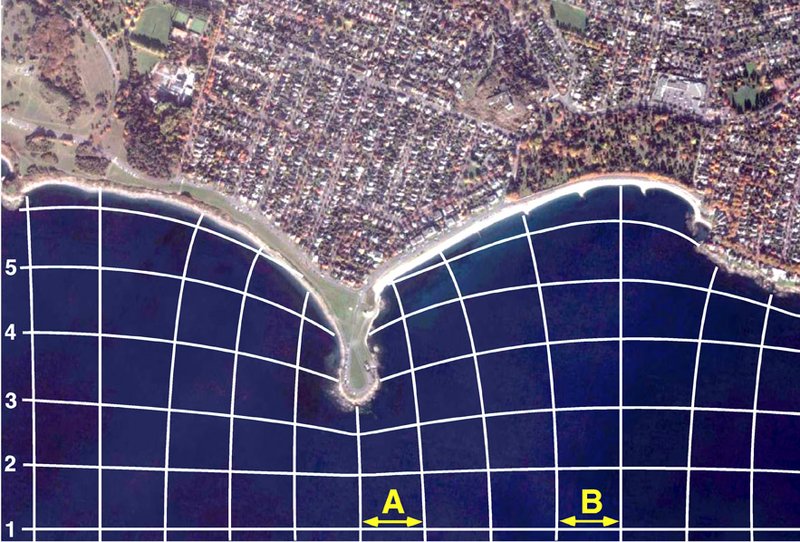Wave Refraction, Erosion,
and Deposition
Segments A and B at position 1 in the figure below
are in deep water and are unchanged. By the time they have reached
position 3, A has slowed down and shortened its wavelength. It
therefore lags behind B which is still unchanged. By the time the
wave reaches position 5, A is about to break on the headland while
B is advancing more slowly into the bay. The end result is that
the crests try to conform to the outline of the shore and to break
parallel to it. Segments A and B in deep water were the same width.
The orthogonals which are drawn at right angles to the crests
from the ends of segments A and B show that the length of A is
shortened by about 20 percent at its breaking point (position 5),
and B is lengthened to more than twice its deep water value at
its breaking point. This means that the wave energy in segment
A is concentrated onto the headland which causes wave height to
increase in addition to the wave heightening caused by the shallowing
of the water. Thus, since wave energy is proportional to wave height,
the power of the waves is greater on the headland. In the bay,
wave height is less since the energy of segment B is spread out.
As a result, headlands are usually sites of intense erosion while
embayments are usually sites of sediment deposition.
Given enough time wave erosion will tend to create a smooth coastline.

The following photograph shows the refraction of waves
from above as they approach the shoreline.

